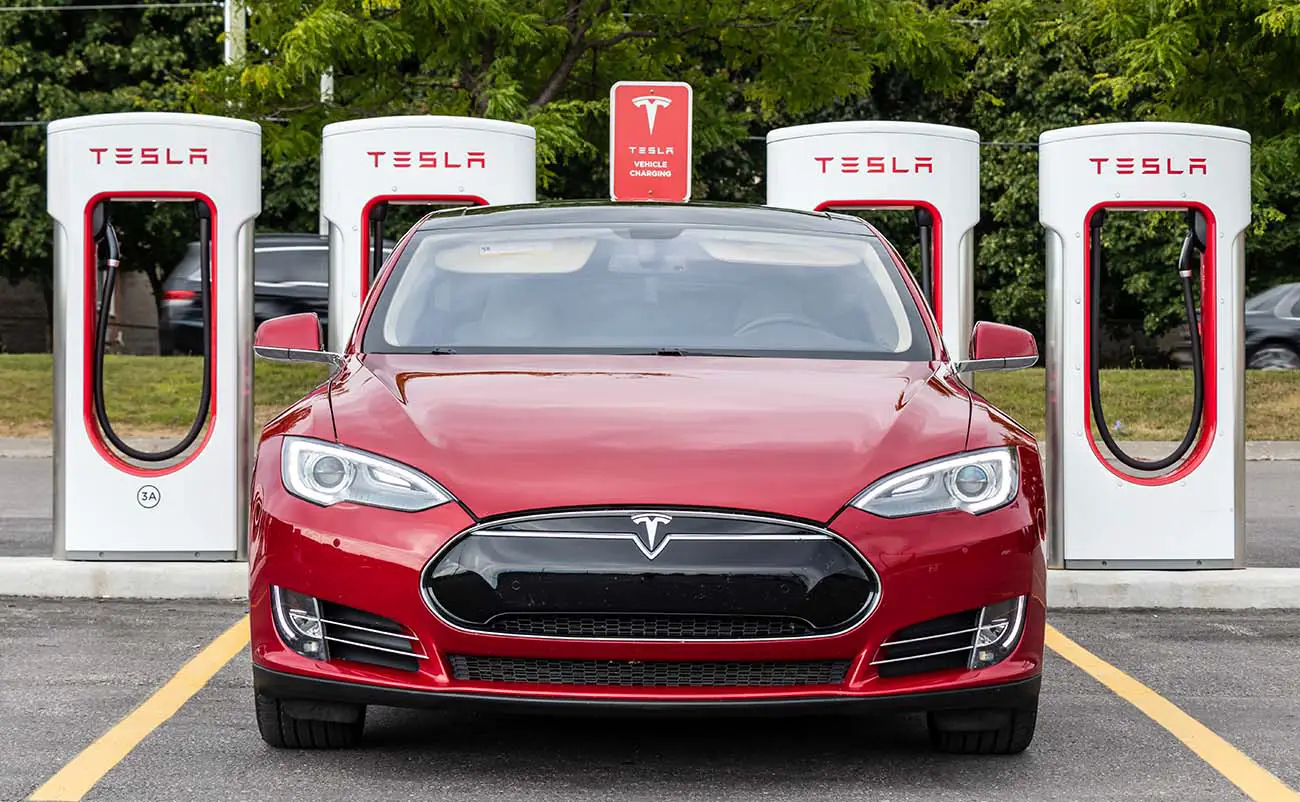Most Tesla owners charge their cars in their garage at home, but it is not as simple as plugging in an EV with a wall charger. Things get even more interesting once you add solar panels and a home energy storage system like the Tesla Powerwall 2. When it comes to electric vehicles, the Tesla brand is one of the most popular on the market, and with good reason. Tesla’s cars are sleek, sexy, emissions-free, and packed with enough tech to make you feel like you’re living in a sci-fi movie. This article explores how the different ways to charge your Tesla at home affect the charging speed. How much power can you send to the car while it’s charging, and how long will it take to charge? You might be surprised by how much your power usage during charging could slow down the process or limit how long you can drive before returning home.
Table of Contents
Tesla Charging Times By Model
It’s a question every Tesla owner has asked themselves: how long does it take to charge a Tesla? While the answer varies depending on the model of your Tesla, there are a few factors that apply regardless of which model you’re charging.
When looking at Tesla charge times by model, you’ll see that some models have faster charging times than others. If you’ve got a Tesla Model 3, you’ll be able to charge up faster than if you have an older model. In this section, we’ll walk through those factors and look at how they impact the time it takes to charge a Tesla by model.
— Tesla Model 3
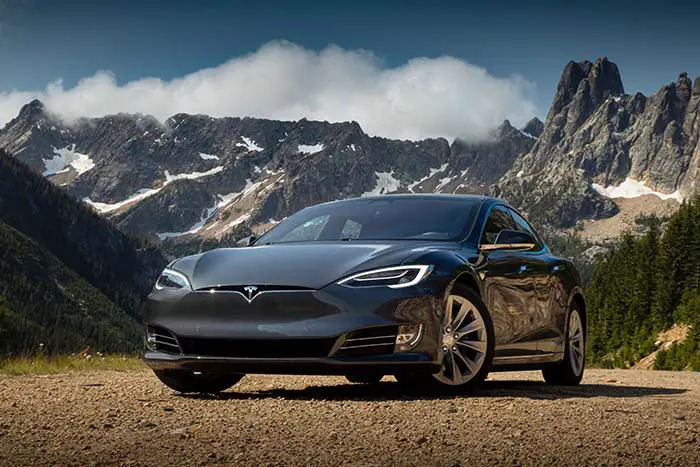
The Tesla Model 3 has been certified by the EPA for a range of 310 miles (499 km) on a single charge. Charging this battery from empty to full takes about 75 minutes using Tesla’s Supercharger network or 10 hours with an 11 kW home charging station. Of course, there are variations of the Model 3, namely the standard range, long-range, and performance trim. But even though these numbers change depending on conditions, the answer is always “it depends.” The main reason for this is that Tesla doesn’t actually charge the battery up to 100%. Instead, they set a maximum state of charge of 90%. They do this because lithium-ion batteries degrade faster if they’re always charged up to 100%, so it’s better for the battery’s health if you don’t fully recharge it every time. So when you pull into a Supercharger station and see your car hit 90% pretty quickly and then slowly creep up to 100%, that’s why — you need to leave 10% in there for your next battery charge.
— Tesla Model S
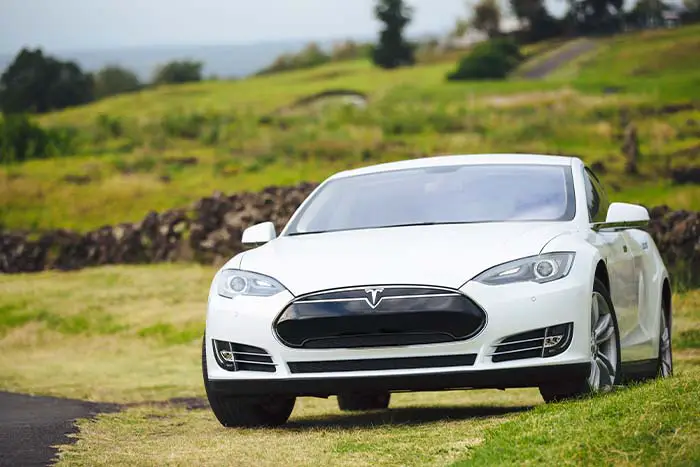
Most Tesla owners use their home charging station, supplied with the car, or a wall connector. A home charger can take anywhere from 8-10 hours to fully charge the car. This depends on your car’s battery capacity and whether you have a standard wall outlet or upgraded electrical panel. A Tesla destination charger will take about 4-6 hours if you’re using one of those at home.
A Tesla Supercharger station will charge much faster: up to 80% in less than an hour or 100% in about 75 minutes. However, you should note that these charges are meant for shortstops during road trips only, not for extended charging periods of several hours. Before going out on a trip, make sure there are enough Superchargers along your route to accommodate your needs.
— Tesla Model Y
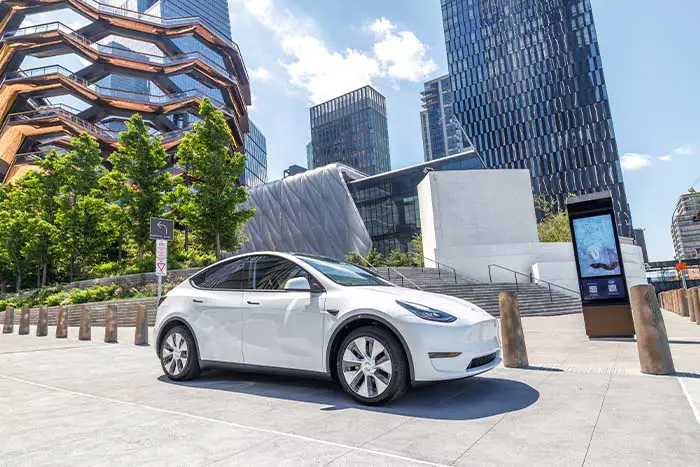
As Tesla’s most affordable vehicle, the Model Y is a great entry point into the world of electric vehicles. But how long does it take to charge up? How long does it take to fully charge a Tesla Model Y? The range on the Model Y is a great 326 miles, but you’ll still want to plan your drives accordingly. Most owners recommend plugging in overnight so that it’s always fully charged by morning.
A full charge from empty takes about 9 hours and 42 minutes with a 220-volt outlet. If you’re using a faster charger, like a supercharger, it will take about 3 hours. However, this type of charging is generally reserved for road trips.
— Tesla Model X
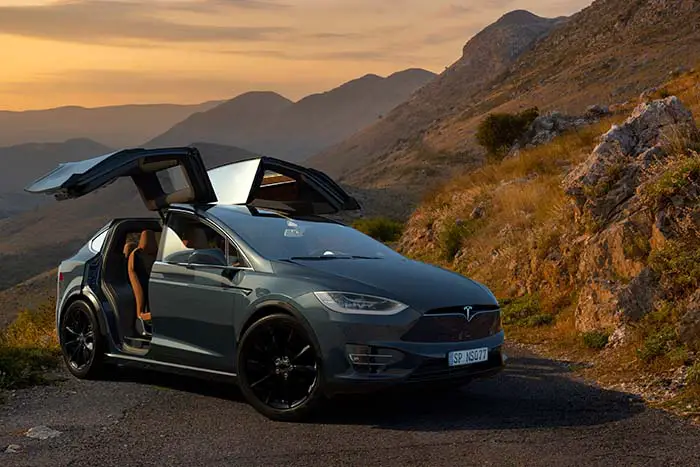
It only takes about an hour and ten minutes for the Tesla Model X to charge from zero percent battery life to full, using one of Tesla’s superchargers. Superchargers are specifically designed for Tesla cars. They can charge them at a rate of up to 120kW — that’s about 400 miles of range added in just 30 minutes. In addition to the superchargers, the Model X can be charged at home using an outlet or a charging station. With an outlet, it will fully recharge after about 12 hours. However, with a charging station, that time is cut down to between six and eight hours.
Types Of Chargers
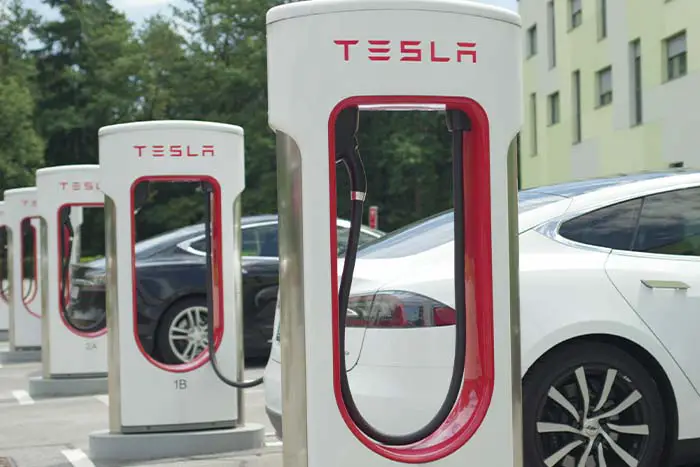
— Wall Connector
The wall connector is the best charger for most people who have a home installation. It’s the cheapest option, costing $500, and it’s the easiest to install. It’s important to note that you’ll need to hire a licensed electrician to set up the wall connector, so it’s not a DIY project that most people can do on their own. The installation costs will vary depending on where you live and your setup.
The wall connector allows you to charge your vehicle overnight at home. It’s meant for indoor use but can be installed outdoors with an additional weatherproofing kit that Tesla sells for $50. The wall connector varies from 18 feet to 50 feet in length, and Tesla recommends choosing a length that allows your vehicle to reach both ends of your driveway without extending the cord across it. That way, you can plug in wherever you’d like without moving the charger cord out of the way.
Tesla also offers a High Amperage Charger (HAC) for an additional $400, but only if your car was made after October 2016. If you choose this option, the HAC will automatically switch between 40 or 48 amps depending on what level of amperage is required by your vehicle.
— NEMA 5-15 Mobile Connector
The Tesla NEMA 5-15 Mobile Connector is the basic charger that ships with every Tesla model. It’s the entry-level charging option available, and it’s not always the right choice for your needs. However, it has a few advantages that appeal to many drivers.
The biggest benefit of this connector is that it gives you a lot of flexibility. It comes with three adapters: one for dryer outlets, one for RV outlets, and one for regular wall outlets like you’ll find in your home. This allows you to charge from any power outlet, no matter where you are. It also has a compact design, which means you can store it easily in the trunk of your car when you’re not using it.
The NEMA 5-15 Mobile Connector is the most portable of the Tesla charging options. It is meant for use specifically with a standard 120V household outlet, and it can be used in an outdoor outlet if your home has one. We recommend this charging option for people who want a backup charger that they can take on the road or to other homes and places. Though this has the slowest charge rate of all the Tesla options, it’s still worth purchasing if you have frequent overnight trips. It helps you charge your car anywhere with a wall outlet.
— NEMA 14-50 Home Charger
The NEMA 14-50 Home Charger is the most common home charging station for Tesla vehicles. It’s a 240-volt outlet that can be installed in your garage or home. The NEMA 14-50 plug for this charger is similar to the one used for a clothes dryer, so you may already have one installed in your house. If not, a licensed electrician will need to ensure that your electrical panel can handle the current required by the charger. This charger is ideal if you have at least a 50 amp circuit available to charge your Tesla overnight. With Level 2 charging, you’ll get about 30 miles of range per hour of charging, so it will take about 10 hours to fully charge a Model S with a 90 kWh battery.
— Tesla Supercharger
The Tesla Supercharger is a 480-volt DC fast-charging station. Tesla’s superchargers are the most powerful charging stations in the world. They’re so powerful, in fact, that they can charge your car faster than you can fill your tank with gas. The supercharger can replenish 170 miles’ worth of electricity in just 30 minutes. That’s over 120 kilowatts per hour — enough to drive from San Francisco to Los Angeles without stopping. The supercharger can be used on any Tesla model 3 or higher and works best when connected to a dedicated circuit.
The stations are primarily located in the United States, Canada, and Europe, with others located worldwide. As of August 2020, there are 1,967 Supercharger stations globally with 19,326 Superchargers. It is intended to enable long-distance travel and has been compared with the fueling of a gasoline-powered car in a gas station.
Where can I find Tesla Superchargers?
Using a Tesla for your travel is a different experience than using any other car. The idea of knowing where the superchargers are located might be new to you, but it’s not difficult to figure out. Just open the map in your Tesla app. With a map that shows you Tesla’s charging network with every charging point in the world, you can plan your trip as you go. You can also see if there are any charging stations along your route or anywhere nearby. If you’re traveling by yourself, you can zoom out and see all the Tesla chargers on the map. It’s a handy tool for road trips. A great thing about the app is that there are so many different types of chargers: Tesla Superchargers, Roadside Assistance Chargers, High Power Wall Connectors, Destination Chargers, and Mobile Connectors. Each one has its own unique features and benefits. For example, some allow for faster charging than others — or even unlimited energy from solar panels on top of them. That way, you can always find the perfect place to charge up along your journey.
The Bottom Line
As you can see, there is no simple answer to this question since the amount of time it takes to charge a Tesla varies from person to person. The best way to figure out how long it will take for your Tesla to charge is by knowing the differences between chargers, how long it will take to go from five miles of range on the Tesla battery meter to 90%, and the size of your battery.
Frequently Asked Questions
How much is a Tesla charging station?
If you’re looking to install a Tesla charging station in your home, you may be wondering how much you can expect to pay for the equipment. The price depends on whether you opt for the Level 2 Wall Connector or the more advanced High Power Wall Connector.
The Level 2 Wall Connector costs $500. This version comes with a 24-foot cable and is specially designed to plug into the Tesla charging port on your vehicle. It’s also compatible with J1772 adapters, used by some other electric cars.
The High Power Wall Connector costs $750 and delivers a charge twice as fast as the Level 2 Wall Connector. If you buy the connector separately, it comes with a 48-foot cable, but if you buy it at the same time as your Tesla, it’s included with a 24-foot cable (which is suitable for most people).
So far, we’ve only discussed the cost of buying the charging station itself — but don’t forget that there’s also installation to consider. The cost of installing one of these EV charging stations can vary from situation to situation. It depends on your location, the type of electrical panel in your home, and whether or not you need to have an outlet installed near your parking.
How long does it take to charge a Tesla at a public charging station?
It depends on the station. There are two types of stations, one called a “supercharger,” and the other called a “destination charger.”
With Superchargers, which are Tesla’s own chargers, it takes about an hour to fully charge a Model 3 with a 75kW battery pack. With the Model S and Model X, you’ll get a full charge in about 75 minutes. Destination charging takes longer — some stations give you unlimited time. Still, others only provide one or two hours of charging time. If you’re using a destination charger, you can expect to get about 20 miles of range for every hour of charging.
How long does it take to charge a Tesla from empty?
The answer to this question depends on where and how you’re charging your car. Using the standard wall outlet at home could take up to 20 hours to fully charge your car from empty. Using one of Tesla’s Supercharger stations will get the job done in just over an hour and a half. And suppose you have a Powerwall 2.0 battery installed at home. In that case, charging should take less than six hours total (and much less if you’re also drawing power from solar panels).

